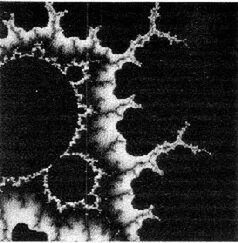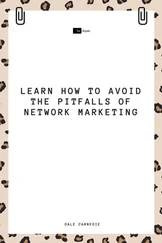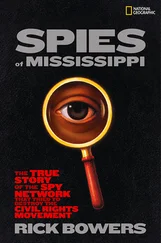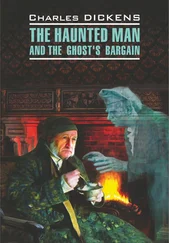During these early days, the New Situationists focused on entertainment and aesthetics. Like the Situationists before them, they wanted to inject playfulness and fun into their droll, serious lives. Berliner immediately began participating in the New Situationists’ aesthetic activities as they attempted to interact with Chicago psychogeographically, in the style of Debord and the SI.
Because of their secrecy and their (possibly?) relatively small numbers, the New Situationists didn’t spark any musical or visual art movements, even on a local level. They either didn’t make much art or it burned in the fire that eventually destroyed their headquarters. They published a few pamphlets or zines without the words “Situationist” or “New Situationist” on them, with unsigned articles in a style both borrowed from the Situationists and helpful in protecting their identities. Some of the articles were reverent histories of Chicago architectural topics; some were personal essays about the L or a particular building in Chicago. They also wrote scathing diatribes against traffic and urban congestion, which they blamed for most of society’s ills. The contemporary urban architect’s tactics, they argued, hemmed people into capitalism-directed movements through an urban area, with pedestrians and drivers diverted to the routes that would pass the most billboards. This was essentially undiluted Situationist rhetoric. The unsigned, photocopied zines didn’t attract any attention, but were for a short time available for purchase at a local independent bookstore called Quimby’s.
Following the path the Situationists had paved, the New Situationists began focusing on politics rather than aesthetics after a few years of existence. In 2000, without revealing their identities, they helped organize and secretly fund a number of far-left political causes and candidates, mostly focusing on social issues, the politics of intellectual property, and creative freedom as it related to the Internet. However, after the events of September 11, 2001, their politics took a radical turn.
They planned what they believed would be a “low-risk, zero-casualty” act of domestic terrorism, to prove that “domestic terrorism was as much of a threat as foreign terrorism and that terrorism itself wasn’t an act of war between nations, but could be a zero-casualty act of social change within a nation.” aThey decided to detonate bombs in eleven L stations across the city. The crippling of the L, which they called the “arms and hands of Chicago,” was intended to mimic the wound New York City received when the Twin Towers fell, to literally stop the city’s movements. In a declaration of intention sent to the Chicago Tribune the night of the bombings, the New Situationists insisted, “We revel in the beauty of this city and her infrastructure, and the destruction of this infrastructure, which we hold so dear, shows how absolutely necessary we believe this demonstration to be.” b
According to Kraus’s testimony, “sometime in May” she and ten other members of the New Situationists were separately informed their involvement was suspected. By the time her compatriots looped in Kraus, every detail had already been planned for 3:15 a.m. on Monday, June 18. The New Situationist leaders had chosen stations that would be closed at that time.
Sometime after 10 p.m. on June 17, Kraus and the ten other New Situationist bombers met with leaders in the New Situationist headquarters. During this meeting and for the rest of the long night, they all wore ski masks with holes for the eyes and mouth. Kraus’s ski mask was dark pink, which looked black enough in the dark. She hadn’t lost her Situationist instinct that play was as important as politics.
At the headquarters, Kraus received a backpack full of plastic explosives. No one told her where they sourced them. She was told that an “advance team” had been deployed to disable the alarm systems and unlock the doors. She was instructed to enter a particular door at her assigned station, drop her backpack and set the bomb to detonate, then pull the fire alarm to clear out any security guards or stray homeless. According to Kraus, she was told that there wouldn’t be any security guards or homeless people; she was told pulling the fire alarm was just a precaution. The bombers planned to reconvene at the headquarters by no later than 4 a.m.
They believed their plan was simple and in its simplicity, doable.
Kraus’s evening began according to plan. She walked to her station, dropped her bag, and pulled the fire alarm — but then Kraus noticed a security guard passed out at her desk, unmoving despite the noise. Kraus spent several moments trying to wake her, only running at the last moment. Kraus managed to escape the bomb’s blast radius, but only barely. The force of the explosion knocked her to the pavement; she landed on her chin, breaking her front two teeth. The police found her bloody and wailing. They arrested her on the spot. Safe in their headquarters, the rest of the New Situationists escaped notice as police tried to contain the mass chaos.
When questioned that evening, Kraus told the arresting officers, senior detectives, and the District Attorney that she would give them everything she knew, then claimed to know very little. Kept in an interrogation room for twelve hours, her jaw swollen and aching, she repeated the same facts over and over again: she didn’t know the names or faces of any New Situationists, except David Wilson and Nicolas Berliner; Berliner and Wilson didn’t participate in planning the bombing and were completely unaware of the plans; she didn’t participate in planning the bombing but did what her superiors told her; she didn’t know the names of her superiors; she didn’t know the faces of her superiors; she didn’t know what they wanted; she didn’t know where they were. She ate three peanut butter and jelly sandwiches, drank three cans of Diet Coke, and took four bathroom breaks. She waited until the eighth hour of her interrogation to ask to speak to an attorney.
The Chicago Tribune sent the manifesto they received to the CPD and published it alongside the report of the bombings. The CPD arrested Wilson and Berliner. Wilson lawyered up immediately and refused to say anything except “I didn’t have anything to do with that.” Panicking, Berliner talked a lot, but the more he said the more it became clear to the detectives and the DA that he had no information. Berliner’s mother and grandmother provided an alibi, as did the classmate who had stayed up with him past 4 a.m., playing Halo 2 over the Internet. Wilson had spent the night at his girlfriend’s apartment, which had a doorman and security cameras. The detectives wanted to charge both Berliner and Wilson anyway, but the DA decided to focus on Kraus.
The Grand Jury proceeding that anticipated Kraus’s criminal trial was something of a surprise in the hubbub it caused. The DA, the defense attorneys, the judge, and the court reporters all expected Wilson to refuse to speak, and to serve some jail time as a result. No one expected Berliner to do the same, but sometime between his arrest and the Grand Jury, Berliner got with the New Situationist program. He sat stone-faced and unspeaking in the witness stand. The judge called a recess; Berliner’s attorney took him into a small conference room in the building, and Dana and Raulson both begged Berliner to talk. He refused to speak even to them. The judge cut him some slack, due to his age and because she considered him a victim of sexual assault (statutory rape). Berliner spent the next five months in a juvenile detention facility; he was released the day he turned eighteen.
Kraus pleaded not guilty to her one count each of involuntary manslaughter and property destruction, against her lawyer’s wishes. The jury found her guilty on both counts. The judge sentenced her to life in prison, without the possibility of parole for twenty-five years. In her ten years of incarceration so far, she’s agreed only to two interviews, the aforementioned one with Anna Kirkpatrick, during which she expressed remorse for the life she took but excitement that the city took the opportunity to “better the property” she had damaged by building an improved new station. The second interview, actually a series of interviews, was with me, toward the end of the assembling of this book. She spoke to me because Berliner negotiated the meeting.
Читать дальше












